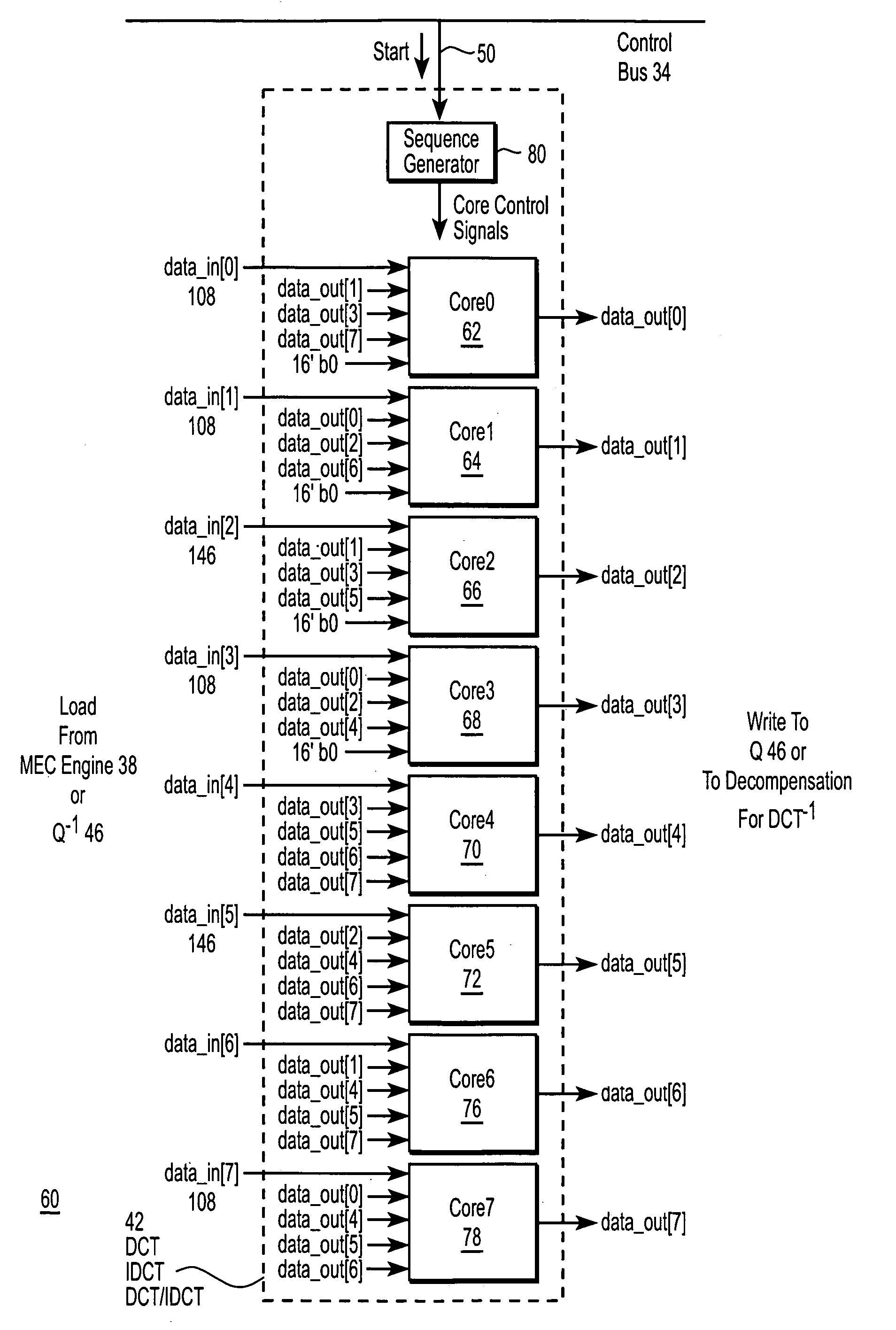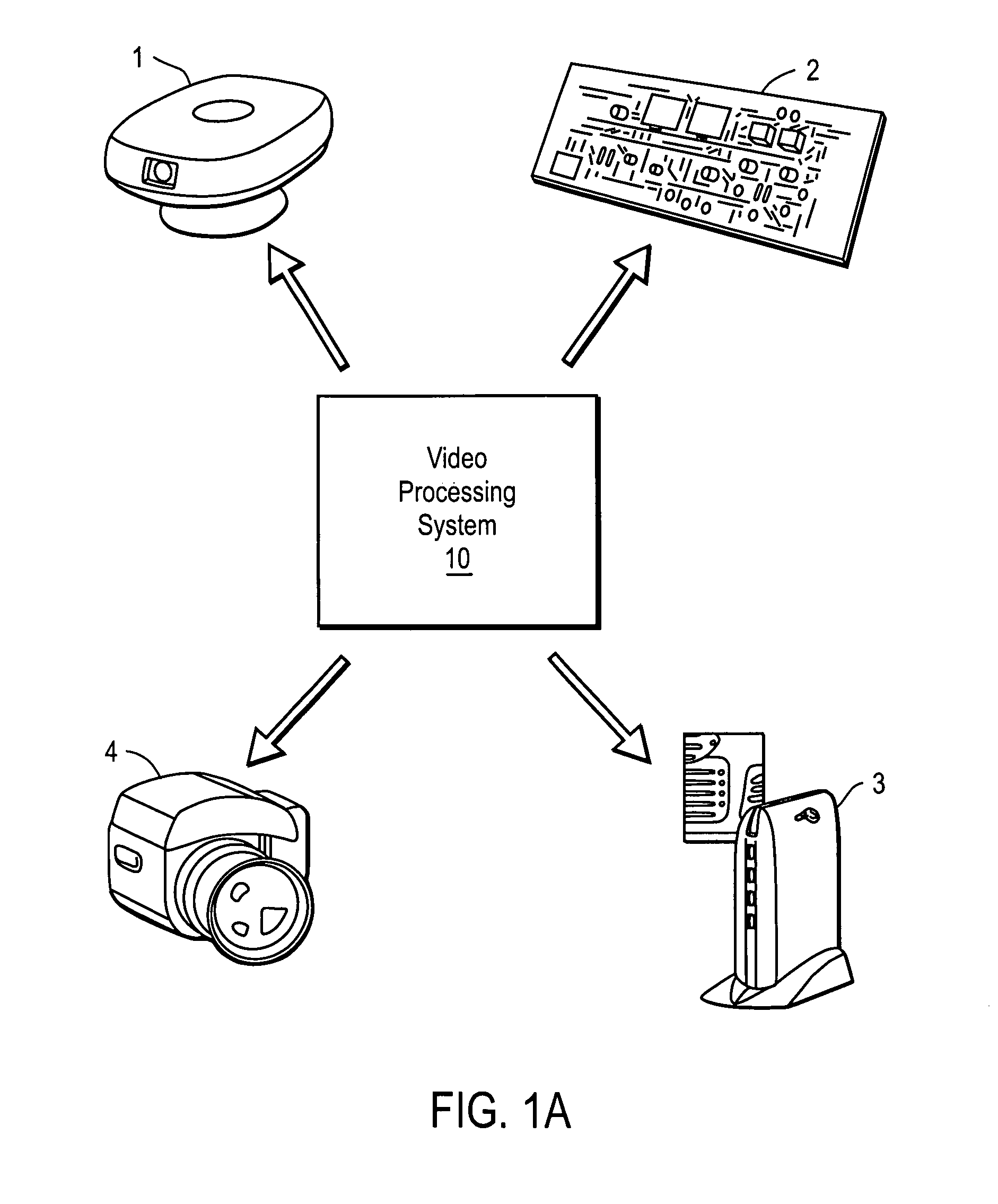DCT/IDCT with minimum multiplication
a technology of dct/idct and multiplication, applied in the field of video processing, can solve the problems of large number of multipliers required for conventional dct implementations, and difficulty in reducing bandwidth, so as to improve the precision of dct results, reduce the large number of multiplication operations, and simplify the hardware design of dct/idct modules
- Summary
- Abstract
- Description
- Claims
- Application Information
AI Technical Summary
Benefits of technology
Problems solved by technology
Method used
Image
Examples
Embodiment Construction
[0007]The present invention overcomes the deficiencies and limitations of the prior art by providing a system for video compression of frames of pictures (images). One embodiment in accordance with the present invention includes a novel system for performing discrete cosine transform and inverse discrete cosine transform using 4-bit lookup tables (LUTs) instead of introducing additional multipliers to perform the multiply and add operations. In that particular embodiment, the system includes a base platform (back end sub-system) having a processor, system bus and interrupt controller, memory device, memory controller, and multi-channel controller. Digitized video signals originating from a source are received by an audio / visual input interface which is coupled to a system bus. The system further includes a front end sub-system having a discrete cosine transform (DCT) module capable of functioning also as an inverse discrete cosine transform (IDCT) module, a quantizer capable of func...
PUM
 Login to View More
Login to View More Abstract
Description
Claims
Application Information
 Login to View More
Login to View More - R&D
- Intellectual Property
- Life Sciences
- Materials
- Tech Scout
- Unparalleled Data Quality
- Higher Quality Content
- 60% Fewer Hallucinations
Browse by: Latest US Patents, China's latest patents, Technical Efficacy Thesaurus, Application Domain, Technology Topic, Popular Technical Reports.
© 2025 PatSnap. All rights reserved.Legal|Privacy policy|Modern Slavery Act Transparency Statement|Sitemap|About US| Contact US: help@patsnap.com



